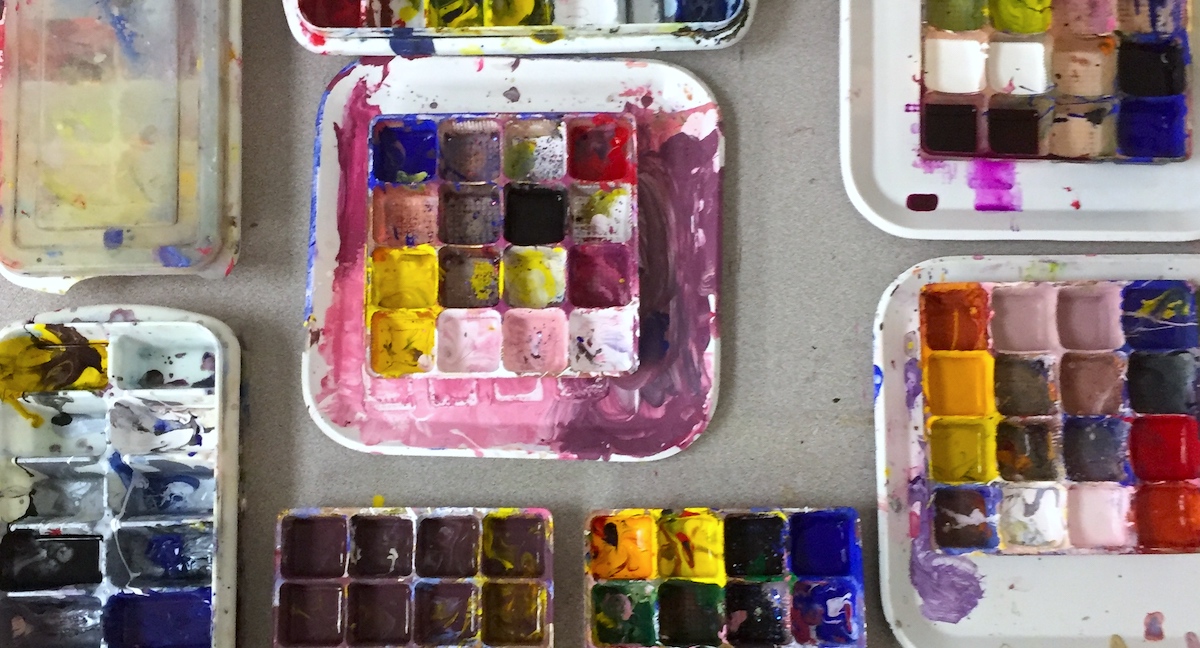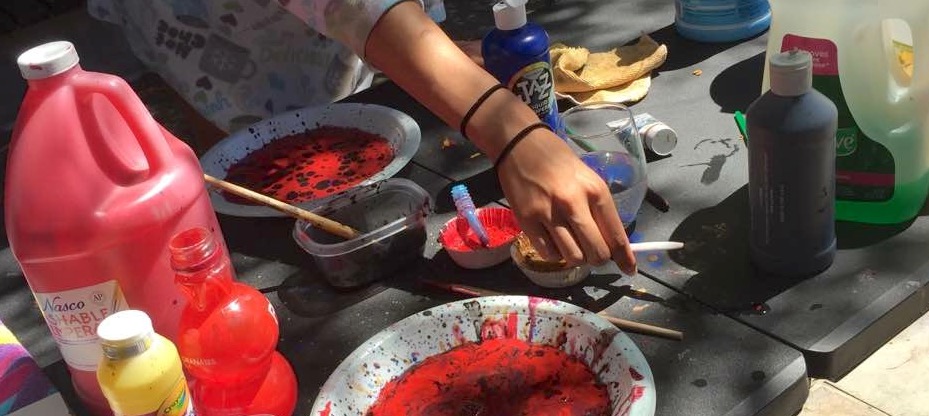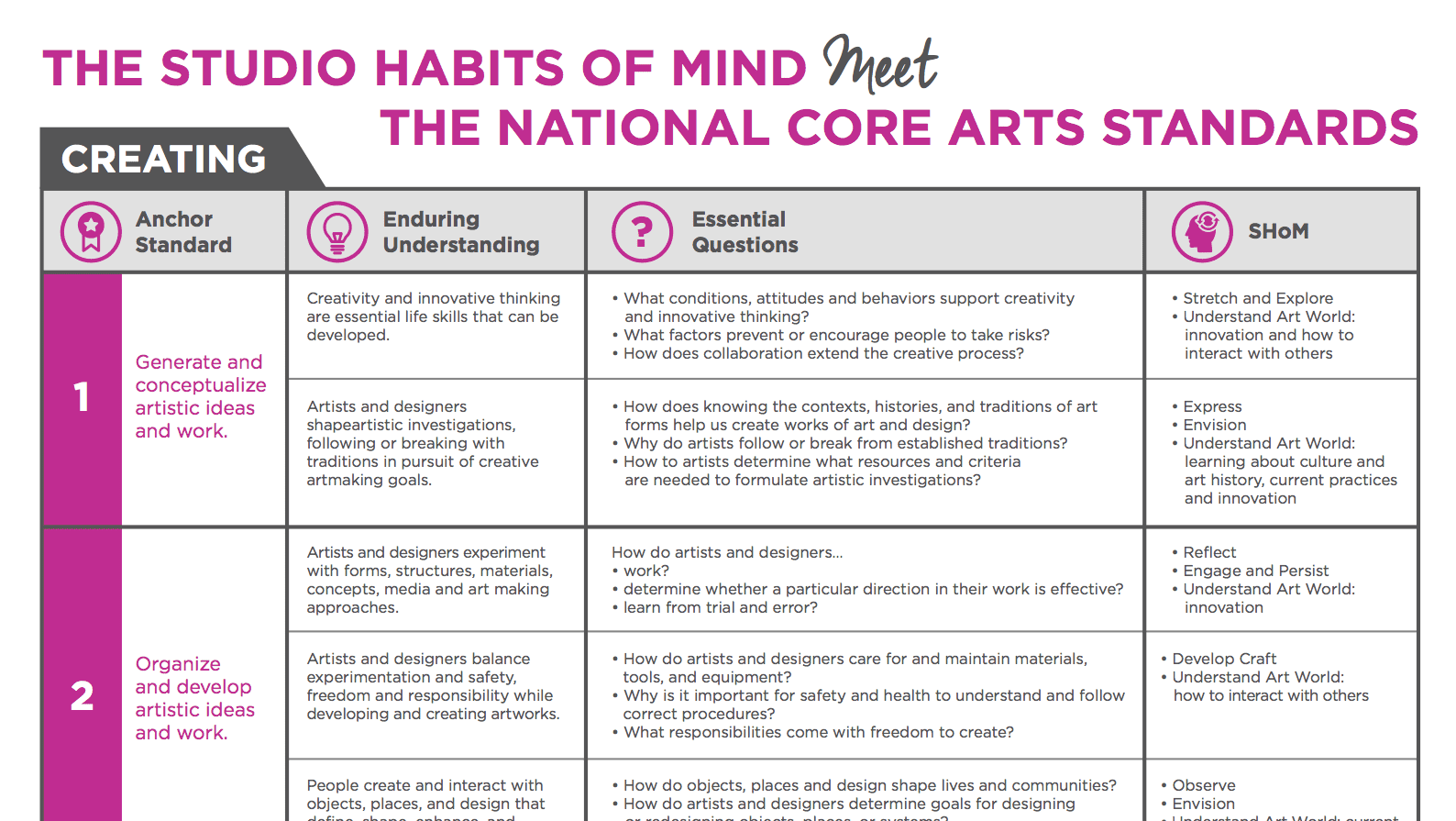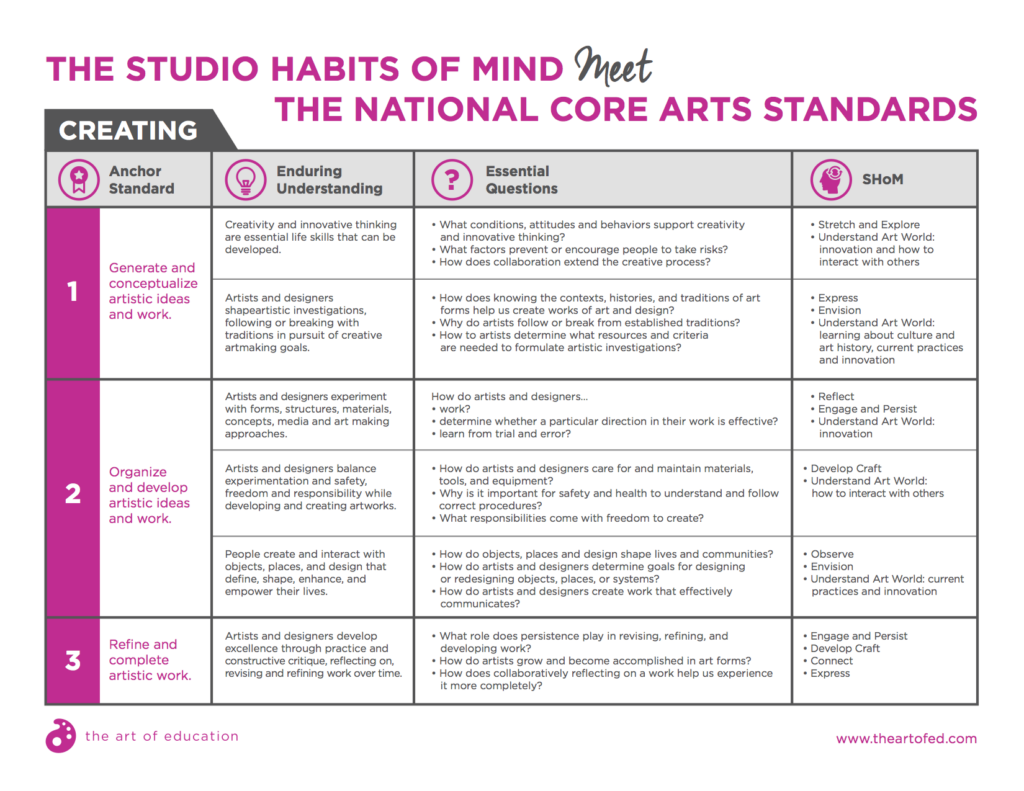It’s no secret in today’s job market, employers are looking for creative and innovative individuals. But does our educational climate of high-stakes testing and accountability really prepare students for this reality? I would argue it does not.
As art teachers, we see students struggle, persist, and ultimately find success in making works of art day in and day out in our classrooms. This challenging process is far more helpful in preparing our students for the future than what goes on in a traditional classroom setting.
What we do in the art room has the power to transform not only our students but society at large. In short, we can teach students how to think creatively by teaching them how to think like artists.

A Meaningful Discourse
Not long ago, I began to examine how the importance of art education was surfacing in discussions among art teachers enrolled in an AOEU course I was teaching, Instructional Strategies for Art Teachers. The course is designed to expand instructional methods and to provide the knowledge and tools to start providing students a deeper, more well-rounded art experience.
 A graduate student in the course, Alexis Hamilton, had some profound thoughts on the topic when she shared, “Creative problem solving will be as crucial for this generation as hunting and farming were for pioneer families settling the West. Because the art room has fewer testable content requirements than the general ed classroom (think standardized tests), it is, therefore, a good place to test techniques for teaching creative problem-solving.”
A graduate student in the course, Alexis Hamilton, had some profound thoughts on the topic when she shared, “Creative problem solving will be as crucial for this generation as hunting and farming were for pioneer families settling the West. Because the art room has fewer testable content requirements than the general ed classroom (think standardized tests), it is, therefore, a good place to test techniques for teaching creative problem-solving.”
Alexis’s Story
As you can imagine, I loved having Alexis in class. Four years ago, Alexis retired from a 30-year career in marketing, creative services, and advertising. But she didn’t rest for long. Currently, she’s teaching first through eighth-grade art in schools serving low-income, at-risk students. In her classroom, Alexis focuses on creative problem-solving using a TAB approach and gives her students ample opportunities to practice The Studio Habits of Mind. If you’d like to learn more from Alexis, you can check out her blog right here.
Throughout the course, Alexis hoped to fine-tune and structure her teaching strategies. Her goal was to make sure her students’ classroom experiences would result in efficient use of time, material exploration, and development of skills in creative problem-solving.

Defining and Refining Instructional Practice
To define and refine her instructional strategies, Alexis investigated many art education pedagogies, frameworks, and the National Core Art Standards. Ultimately, she decided to shift her instruction toward a choice-based program which teaches the Studio Habits of Mind (SHoM) with a few other strategies sprinkled in for good measure.
As she challenged herself and her students, Alexis said, “I had to confront the problem of teaching students to listen to their independent ideas because throughout much of their lives they had been expected to follow the direction of others using external rewards.” Alexis recognized to develop creative problem-solvers she needed to teach her students to think like artists. She echoed these thoughts when she told me, “For schools who want students to acquire creative problem-solving skills and practice self-regulation, the SHoM framework makes sense.”
A New Tool Emerges
As Alexis continued to think about how to hone and shape her curriculum, she kept coming back to the Studio Habits of Mind and the National Core Arts Standards as anchoring ideas. In a recent discussion board, she shared a resource she developed which shows how the two fit together. She admitted that this is a “30,000-foot view” of the concept. However, I think you will agree it is a terrific map to help us wrap our brains around how these two frameworks can jibe. Alexis was kind enough to share her work so that you can download your copy below.
Hands-on activities, like those found in the art room, provide all students with the opportunity to experience, acquire, practice, and succeed with creative problem-solving skills. We can all work to refine our instructional practice to incorporate more of these experiences for our students. If you’re interested in learning more, consider signing up for AOEU’s course Instructional Strategies for Art Teachers. You’ll be able to participate in conversations and share resources with your amazing peers just like Alexis! I hope to see you in class!
On which frameworks do you base your instructional strategies?
Do you use the Studio Habits of Mind in your classroom? If so, how?
Magazine articles and podcasts are opinions of professional education contributors and do not necessarily represent the position of the Art of Education University (AOEU) or its academic offerings. Contributors use terms in the way they are most often talked about in the scope of their educational experiences.






